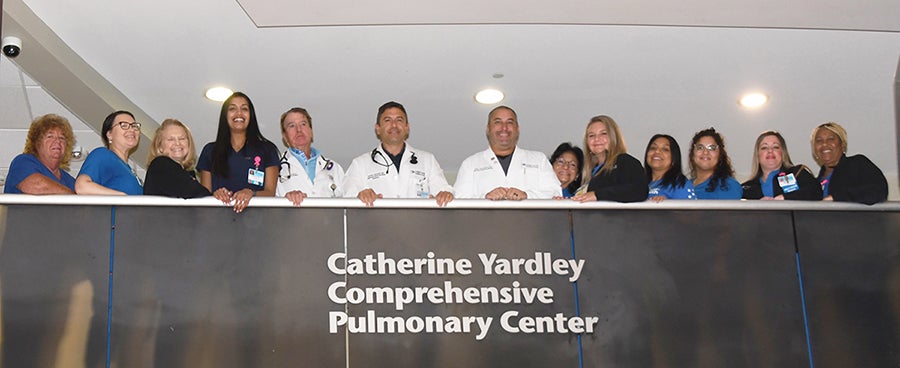Helping to address a leading cause of cancer mortality
August 1, 2025
Categories: Lung Health, Cancer, Oncology
As a disease with one of the lowest five-year survival rates, lung cancer takes the lives of more than 356 Americans every day.1 Patients who are screened for lung cancer and found to have a suspicious nodule are recommended for biopsy, surgery or another form of care like watchful waiting. This stage of the patient journey can be filled with fear and uncertainty, and patients and their families need trusted information about the disease and the process.
This World Lung Cancer Day, Holy Cross Health is excited to share news about a new, advanced option for lung biopsy that may help provide answers for patients: a cutting-edge, minimally invasive approach to lung biopsy using the Ion Endoluminal System by Intuitive—the same company behind the well-known da Vinci surgical system.
This robotic-assisted technology allows us to reach deep into the lungs to collect tissue samples with greater precision and stability than traditional methods. This can be especially helpful in diagnosing lung conditions earlier and more accurately. In many cases, a successful biopsy can reduce the need for additional procedures.
As you may know, lung cancer is the leading cause of cancer-related deaths. However, when it’s found early—at stage 1A-2—the 5-year survival rate can be as high as 92%. Ion may help us reach those early diagnoses by improving access to hard-to-reach areas of the lung.
We use Ion because it offers:
- Greater reach and precision than traditional bronchoscopy
- A minimally invasive approach with low complication rates
- The potential to improve diagnostic yield and patient outcomes
Our team is committed to providing timely, compassionate care. Learn more and schedule an appointment online.
For help navigating a lung cancer diagnosis, please call our Pulmonary Navigator at 954-542-2428.
1. State of Lung Cancer Report 2023. American Lung Association. Web. 25 January 2024.
2. Detterbeck FC, et al. The eighth edition lung cancer stage classification. Chest. 2017;151(1):193-203. doi:org/10.1016/j. chest.2016.10.010.
